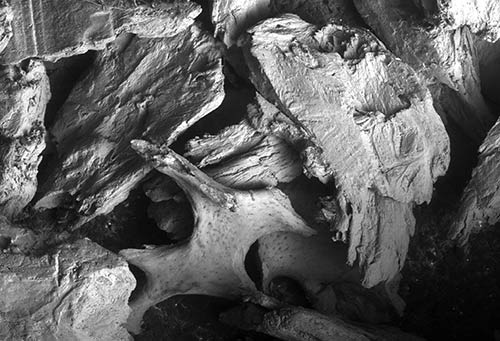MinerOss® abstracts

MinerOss abstracts
MinerOss research
MinerOss from BioHorizons is a mixture of allograft mineralized cortical and cancellous bone particles for use in ridge and sinus augmentation, socket grafting, periodontal defects and grafting for implant placement. MinerOss provides the advantage of having the combination of cortical and cancellous chips in one vial. The cortical component provides structural integrity and space-maintaining capability. The cancellous component's porous architecture promotes osteoconduction and rapid revascularization.

MinerOss abstracts
Purpose:
To document the clinical and histologic outcomes of sinus augmentation using a novel allogenic bone substitute as a sole grafting material.
Materials:
Patients in need of sinus augmentation before implant placement were recruited for this study. Sinus augmentation procedures were performed following a lateral approach, using a freeze-dried allograft as the only grafting material. Patients were followed up postoperatively for 6 months. Plaque score, wound healing, and patient discomfort were recorded at each follow-up visit. Implants were placed between 6 and 7 months after sinus augmentation and restored 6 months later. Bone core biopsy specimens were harvested at the time of implant placement and processed for histologic and histomorphometrical analysis. Vital bone, remaining allograft (RA) particles, and nonmineralized tissue percentages were assessed on each sample. Results were expressed as mean percentages with SD.
Results:
Of the 23 sinus patients, 20 patients underwent sinus augmentation surgery. All patients had satisfactory postoperative healing in the absence of complications. A total of 39 implants were placed. One implant failed and was replaced 3 months later. Histologic analysis revealed the presence of well-organized lamellar bone, in direct contact with RA particles. Mean vital bone was 23.02 ± 19.11%, mean RA was 22.25 ± 20.30%, and average nonmineralized tissue was 54.73 ± 13.51%. Conclusion: Clinical and histologic findings support the suitability of an allograft consisting of a combination of cortical and cancellous chips for sinus augmentation procedures.
©Implant Dent 2010;19:330-341
Background:
Maxillary sinus augmentation is one of the most reliable implant site development options to increase vertical bone height. However, graft consolidation requires adequate angiogenesis and migration of cells involved in osteogenesis and bone remodeling. It is speculated that these biologic events are greatly determined by the dimensions of the maxillary sinus cavity. Hence, the purpose of this study is to assess the influence of the distance from the lateral to the medial wall of the maxillary sinus on the outcomes of sinus augmentation procedures.
Methods:
Maxillary sinus augmentation is one of the most reliable implant site development options to increase vertical bone height. However, graft consolidation requires adequate angiogenesis and migration of cells involved in osteogenesis and bone remodeling. It is speculated that these biologic events are greatly determined by the dimensions of the maxillary sinus cavity. Hence, the purpose of this study is to assess the influence of the distance from the lateral to the medial wall of the maxillary sinus on the outcomes of sinus augmentation procedures.
Results:
Twenty-one patients underwent sinus augmentation for a total of 24 sinuses; however, the data analyzed contained only one sinus per patient. One sinus developed an infection after grafting, resulting in a 96% success rate for the sinus grafting procedure. Twenty sinuses were used in the final statistical analysis. Histomorphometric analysis revealed that mean %VB was 22.71 ± 19.08, mean percent of remaining allograft 23.39 ± 20.85, and average percent of non-mineralized connective tissue was 53.90 ± 13.23. Analysis of the correlation between %VB and BPD by linear regression, using the actual values of BPD showed a strong negative association (R2=0.141;P<0.001).
Conclusion:
The findings suggested that %VB formation after maxillary sinus augmentation is inversely proportional to the sinus BPD.
©J Periodontal 2010:81:1041-1050
Purpose:
This case report documents the histological, histomorphometric, and radiographic effects of a few radiated-preserved bone allograft for sinus elevation procedure.
Materials and Methods:
This unique bone substitute differs from other forms of bone allograft processed through the standard cryopreservation method. Histology from bone biopsy core samples revealed newly formed bone with a well-organized lamellar bone structure in general and remaining particles were observed in contact with surrounding newly-formed bone.
Results:
±6.77% graft resorption from baseline to 6 months.
Conclusion:
The outcome of this report suggests that this bone allograft could be successfully used in sinus lifting procedures. It encourages further research of this radiated-preserved bone allograft material in oral and maxillofacial reconstruction.
©Implant Dent 2008;17:430-438








